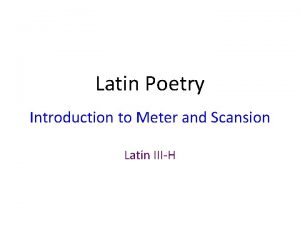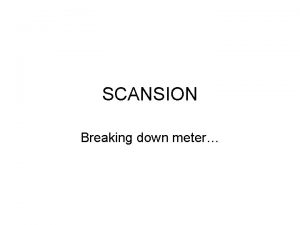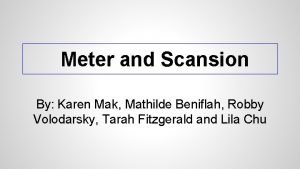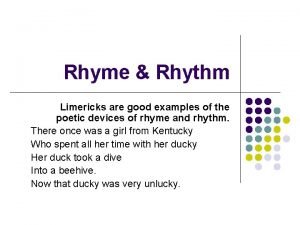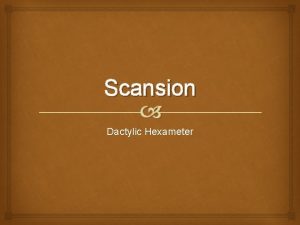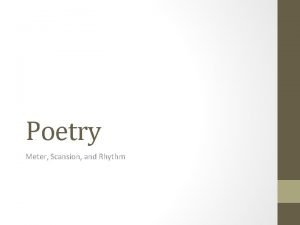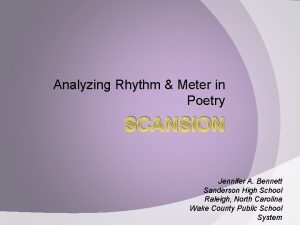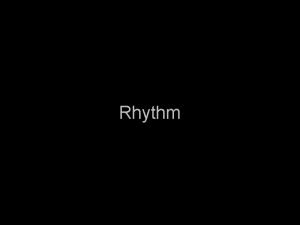Scansion of Latin Poetry HOW CLASSICAL RHYTHM WORKS






- Slides: 6

Scansion of Latin Poetry (HOW CLASSICAL RHYTHM WORKS)

Overview Latin, like may other classical languages, uses quantitative meter for its verse. This means that unlike English, where the accent of a given syllable determines its value in verse, a Latin syllable's value is determined by the length of time it takes to say it.

ELLISION If two words are on the same poetic line, and the first ends with a vowel or m, and the second begins with a vowel or h, the last syllable of the first word and the first syllable of the second word elide, forming a single consonant, which has the value of the longer of the two syllables. This syllable is pronounced either as a combination of the two syllables, or, by individual choice, as the second syllable. If the second word is est, "is, " the syllable is pronounced as the first syllable with "-st" added to the end.

LONG BY NATURE: A vowel that is long, i. e. marked with a macron makes its syllable long. It is then called "long by nature. “ Since most scansion activities do not have macrons, this often must be checked using a dictionary.

DIPTHONGS This also includes the diphthongs: æ, au, ei, eu, oe, and ui, but only when none of the vowels in the dipthongs are long or marked by a dieresis (e. g. diêî or âëreus. )

LONG BY POSITION If a vowel has two or more consonants between itself and the next vowel, it makes its syllable "long by position. " The letter x (and sometimes z) counts as two consonants for the purposes of scansion. The digraphs (two-letter combinations) ch, ph, th, qu and sometimes gu and su count as single consonants. A mute (b, c, d, g, p, or t) followed by a liquid (l or r) can count as a single consonant, as long as they are in the same word.
